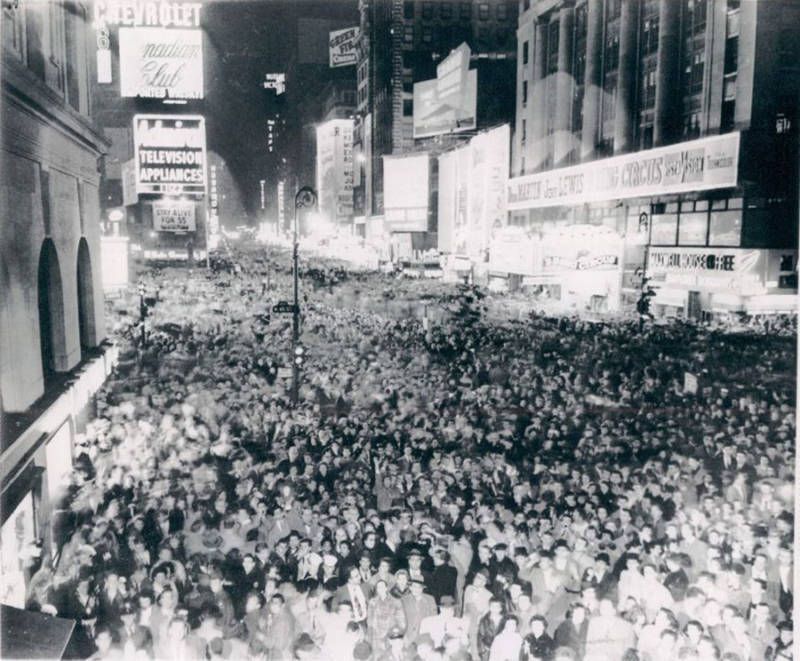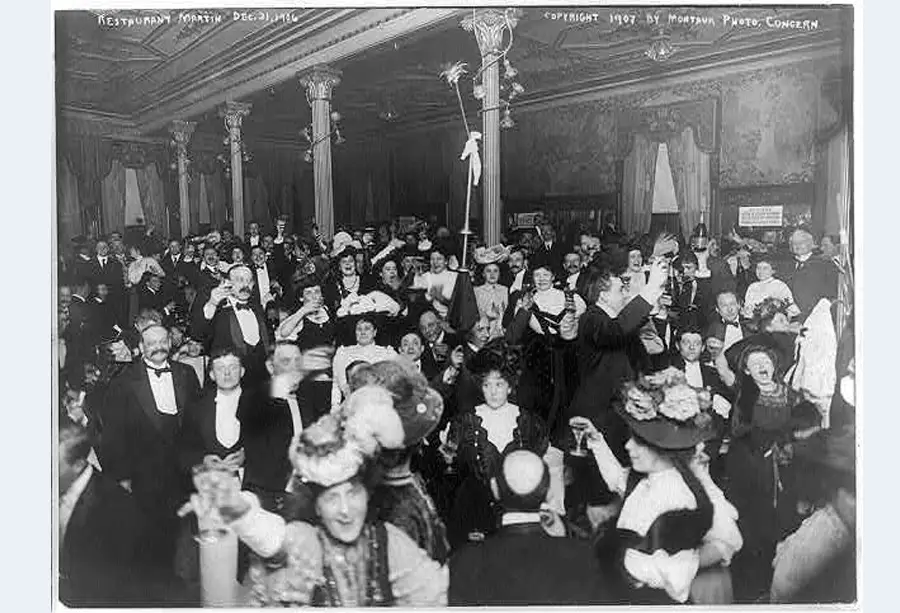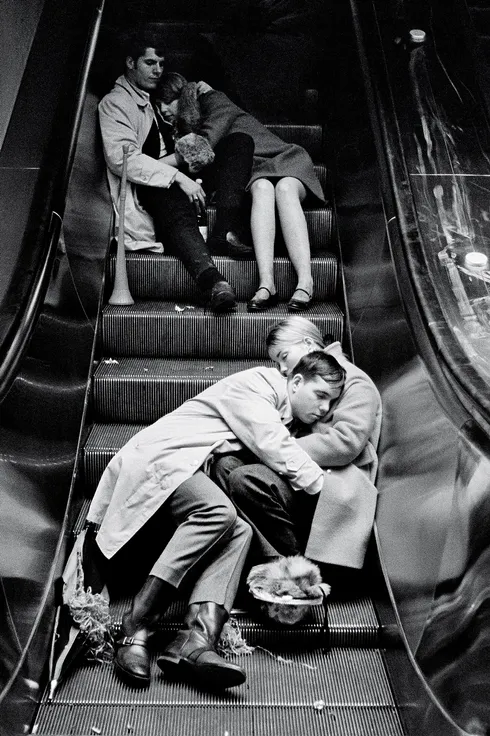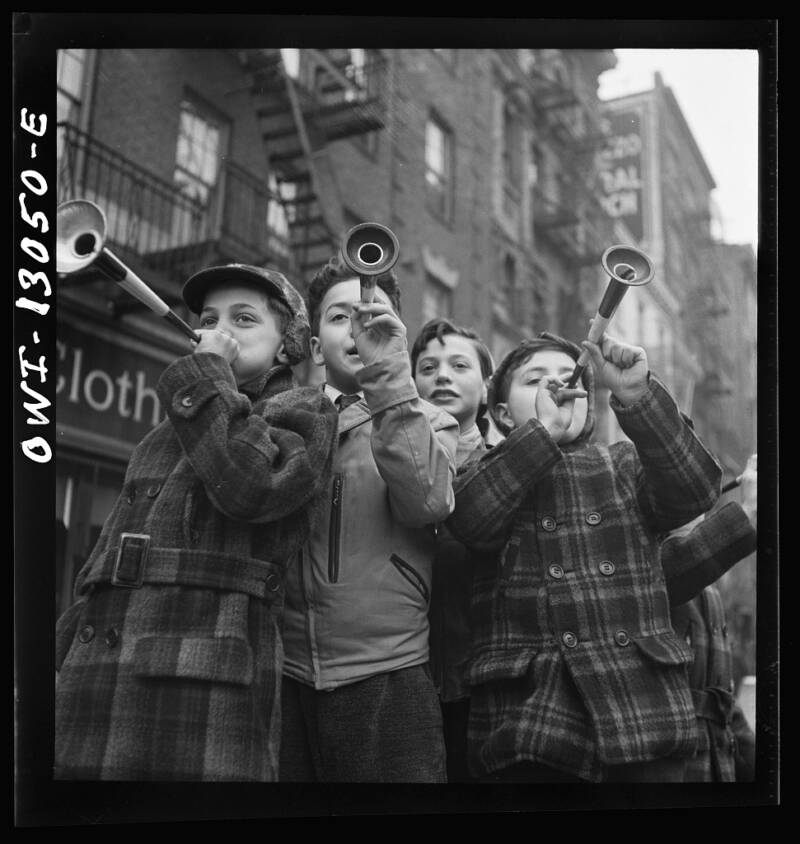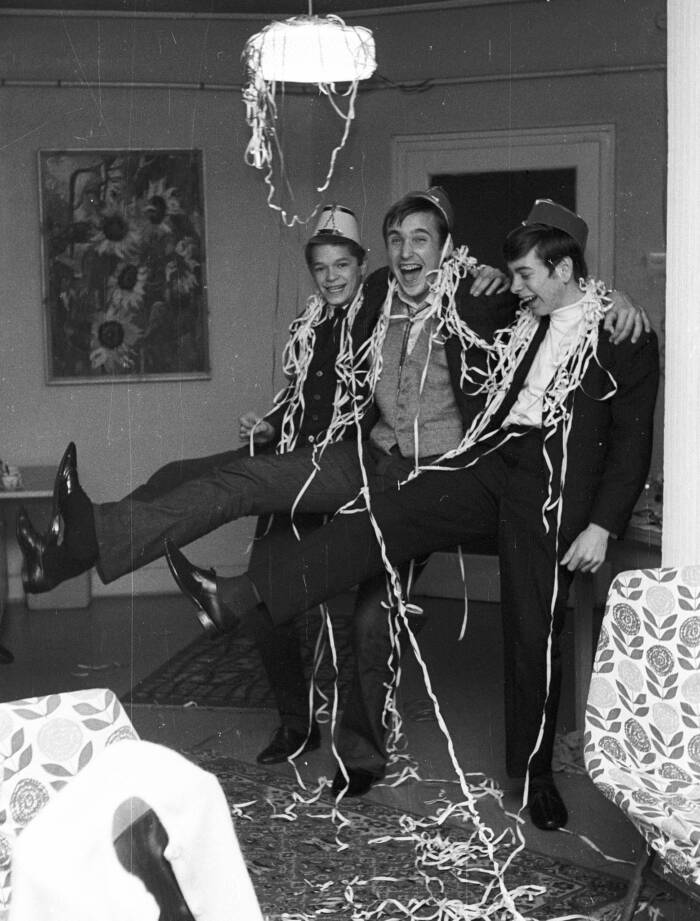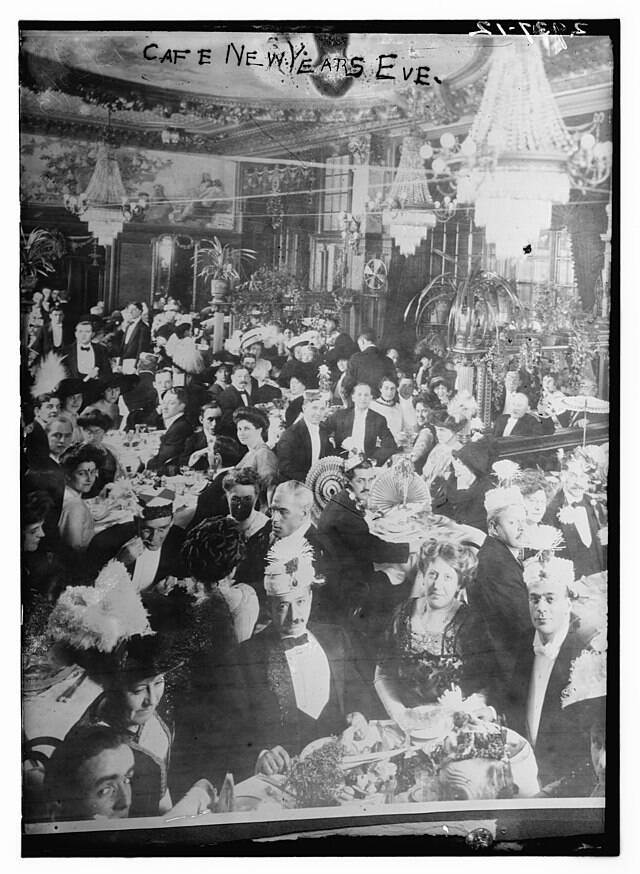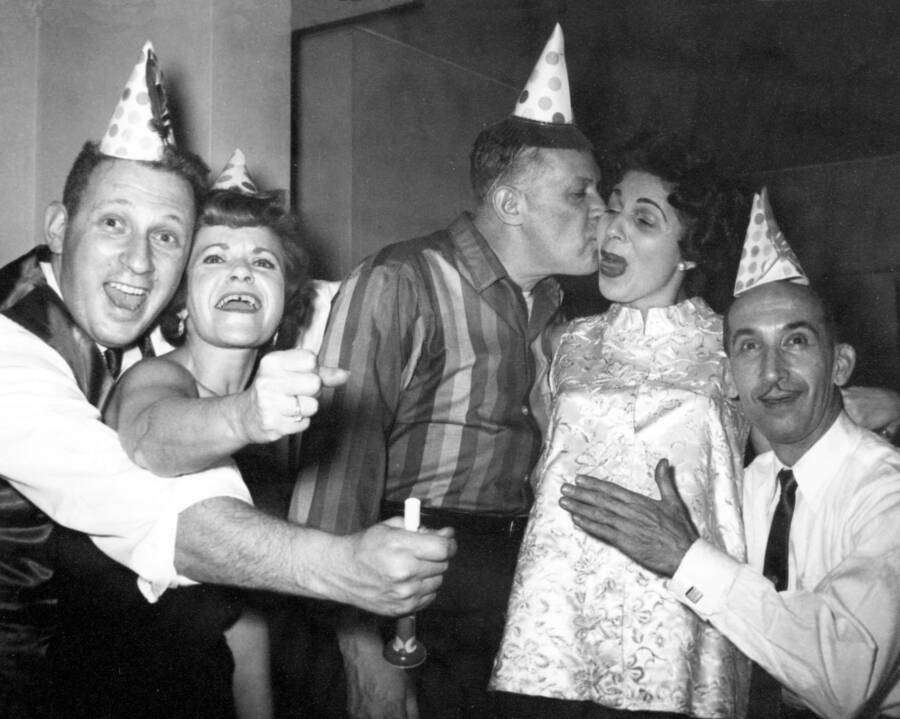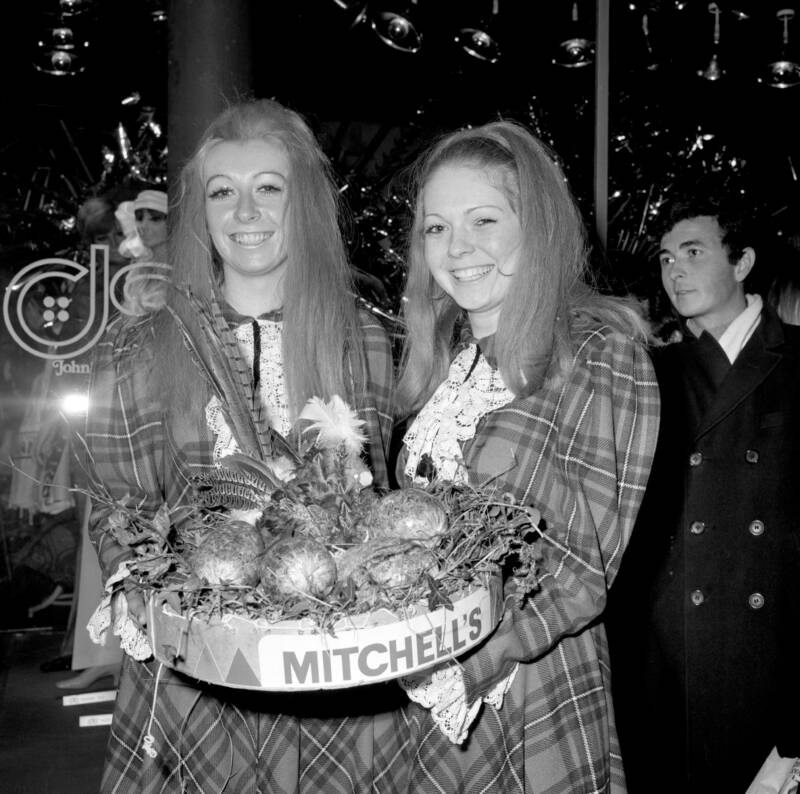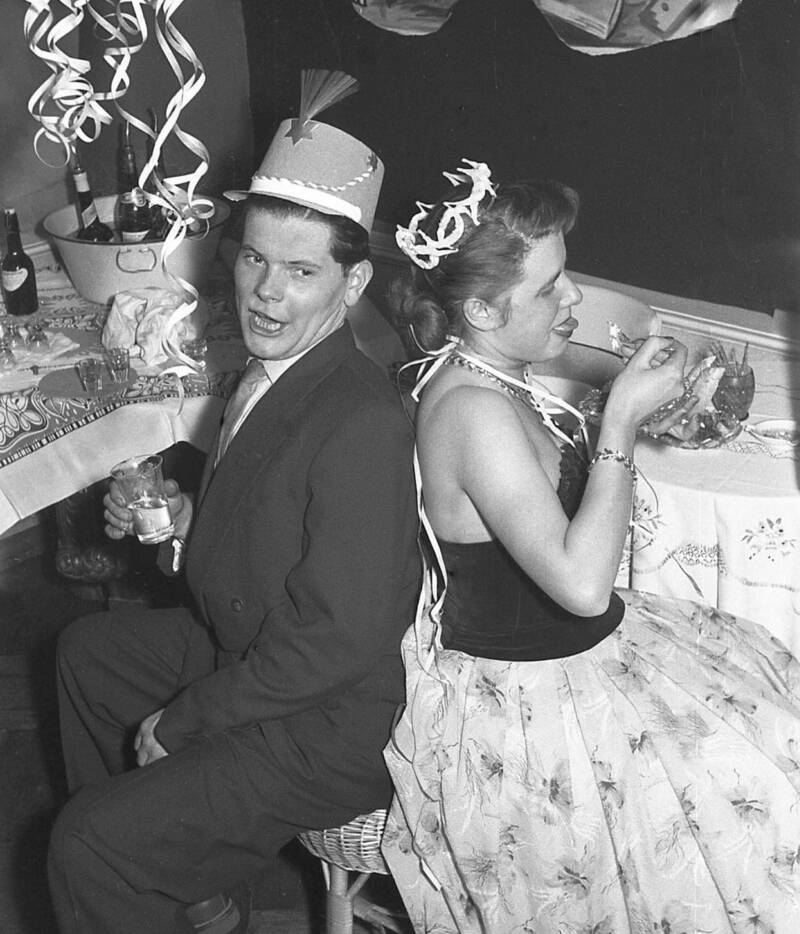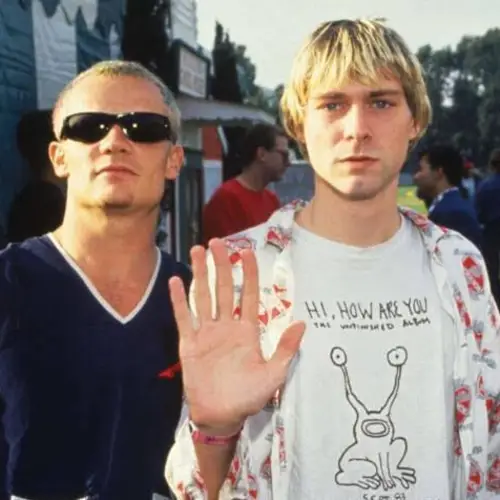These photos prove that New Year's Eve has always been one of the world's wildest holidays.
Every year on December 31st, revelers around the world ring in the upcoming New Year by gathering with friends and family members, tuning in to the Times Square Ball Drop, popping champagne, sharing a kiss with a loved one, and singing off-key renditions of "Auld Lang Syne."
New Year's Eve is a time to reflect on the past year, and to look ahead to the new one. Some will make resolutions, coming up with goals for the next year. For many, it's also an exuberant celebration, a night of drinking, cheering, and going wild. And as these vintage New Year's photos show, these traditions have been ubiquitous in America — and beyond — for years.
But where did they begin?
The History Of The Times Square Ball Drop

NYPLBefore Times Square became New York City's premiere New Year's Eve destination, most revelers flocked to Trinity Church on Wall Street to hear the bells at midnight.
Every year, millions of people tune in to see the New Year's Eve Ball drop in Times Square in New York City, signaling the end of the past year and the beginning of a new one. For many, this tradition is almost synonymous with New Year's Eve itself. According to the official Times Square website, the idea came from Adolph Ochs, the former owner of The New York Times.
Starting in 1904, Ochs hosted raucous New Year's parties in Times Square, complete with magnificent fireworks displays, cementing the site as New York City's premiere destination to ring in the New Year.
But when the city banned fireworks displays in the area, Ochs came up with a flashy alternative. The ball drop was inspired by a 19th-century maritime tradition called "time-balls," in which a ball would drop at a certain time every day at observatories to help the captains of passing ships to accurately set their chronometers. Ochs decided to fashion a new version of the time-ball for his New Year's parties, and the Times Square Ball Drop was born.
At midnight on New Year's Eve 1907, the ball dropped for the first time from the flagpole on top of One Times Square. The first ball was a 700-pound orb made of wood, iron, and 100 lightbulbs that was five feet in diameter, but the ball has seen multiple evolutions throughout the years. Today, the ball is a massive 12 feet in diameter, weighs 11,875 pounds, is covered with 2,688 crystal triangles, and is illuminated by 32,256 LEDs.
Over the years, the emergence of television brought the ball drop ceremony into people's homes, allowing revelers around the world to incorporate it into their New Year's Eve traditions. And different towns have also come up with their own localized version of the ball drop. For instance, Dillsburg, Pennsylvania drops a giant, anthropomorphic pickle sculpture in its annual "Pickle Drop." And Tallapoosa, Georgia drops a stuffed possum.
The Origins Of The Midnight Kiss

Sueddeutsche Zeitung Photo/Alamy Stock PhotoA couple shares a New Year's kiss in 1939.
Finding someone to kiss at midnight has long been a New Year's tradition, but how did it start? The origins of this custom are murky, but according to Reader's Digest, it can be traced back to two winter festivals.
The first is Saturnalia in ancient Rome, held during the winter solstice between December 17th and December 23rd. This was the biggest party of the year for the Romans, and because heavy drinking was involved, it's safe to assume there was some kissing involved as well, leading some experts to suggest this may have been where the New Year's kissing tradition began.
The second is the traditional Viking festival Hogmanay, which is still celebrated on New Year's in Scotland today. Per tradition, strangers and friends offer one another kisses to wish them a "Guid New Year."
The custom is also part of German and English folklore. Daniel Compora, an associate professor of English Language and Literature at the University of Toledo, said these traditions "indicate that whoever a person is with at midnight portends what type of luck they will have for the rest of the year."
As German and English immigrants made their way to the United States over the years, they brought their folklore with them, and over time, the New Year's kiss became integrated into American culture.
How Did "Auld Lang Syne" Become The Anthem Of New Year's Eve?
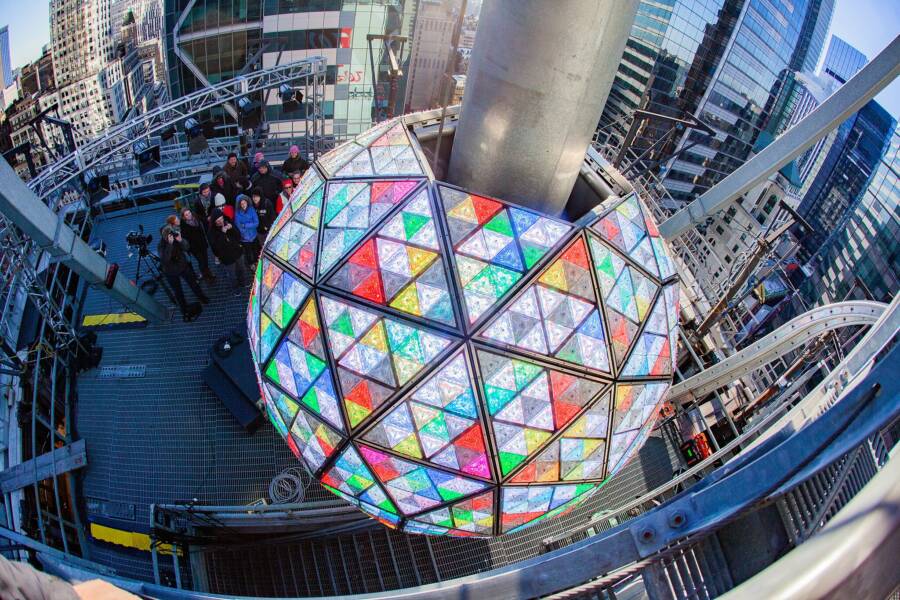
Wikimedia CommonsMillions tune in to see the ball drop in Times Square every year — and sing "Auld Lang Syne" at midnight.
If there's one song considered to be the New Year's Eve song, it's "Auld Lang Syne." The wistful Scottish folk song, whose title roughly translates to "Old Long Since" or "for old times' sake," is broadly interpreted to be about cherishing old friends and memories, making it a fitting choice for a day about reflecting on the past year and looking forward to the new one.
While the lyrics to "Auld Lang Syne" were written by Scottish poet Robert Burns, TIME reports that the tune's popularity as a New Year's song can be attributed to a Canadian man named Guy Lombardo.
Known as "the last great dance-band leader," Lombardo famously hosted a wildly popular annual New Year's Eve concert in New York City, starting in 1929. The event was broadcast on the radio and later on television, giving millions of people the chance to hear Lombardo's rendition of the song, which became the celebration's memorable "theme song."
Lombardo explained that the area of Ontario where he was from had a large Scottish population. There, it was traditional for bands to end dances with "Auld Lang Syne." It was a natural choice, then, to play it at the end of the New Year's concert. "Call it corny," Lombardo said. "I don't care."
After perusing these vintage New Year's Eve photos, learn about some of the most interesting New Year's traditions around the world. Then, check out these vintage photos of New York City at its weirdest.
